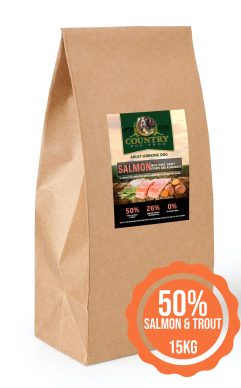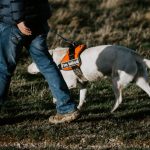
As the British summer brings longer days and warmer temperatures, it’s essential for owners of working dogs to take extra care to ensure their furry companions stay healthy and comfortable. From dietary adjustments to managing the effects of heat on performance, here are some tips to keep your working dog in top condition this summer.
Dietary and Nutritional Requirements
Proper nutrition plays a crucial role in maintaining the health and vitality of working dogs, especially during the summer months when they may be more active. Ensure your dog’s diet includes high-quality protein sources to support muscle health and endurance. Additionally, consider increasing their intake of water-rich foods such as fresh fruits and vegetables to help keep them hydrated in the heat.
Supplementing their diet with omega-3 fatty acids can also help support joint health and reduce inflammation, which is particularly important for working dogs engaged in physically demanding activities. Be mindful of portion sizes and avoid overfeeding, as excess weight can strain your dog’s joints and decrease their stamina.tcout
Managing the Heat
The summer heat can take a toll on your working dog’s performance, leading to fatigue, dehydration, and even heat-related illnesses. To mitigate these effects, schedule training sessions and work tasks during the cooler parts of the day, such as early morning or late evening. Provide plenty of shaded areas where your dog can rest and cool off between activities.
Invest in cooling accessories such as vests or mats that can help regulate your dog’s body temperature during outdoor activities. Always have fresh water available and encourage your dog to drink regularly to stay hydrated. Signs of heat exhaustion or heatstroke include excessive panting, drooling, lethargy, and disorientation. If you notice any of these symptoms, move your dog to a cooler area immediately and seek veterinary attention.
Changes to Make
As a responsible dog owner, it’s essential to adapt your routine and care practices to accommodate the challenges of summer. Avoid leaving your dog in hot cars or confined spaces without adequate ventilation, as this can quickly lead to heatstroke. Take frequent breaks during outdoor activities, allowing your dog to rest and cool down as needed.
Regular grooming is also crucial during the summer months, as it helps prevent overheating and reduces the risk of skin infections. Trim your dog’s coat to a manageable length, especially if they have a thick or heavy coat that can trap heat. Additionally, check their paw pads for signs of damage or irritation from hot pavement or surfaces.

Signs of Heat-Related Suffering
It’s essential to recognize the signs of heat-related distress in your working dog and take prompt action to address them. Watch for symptoms such as excessive panting, rapid heartbeat, weakness, vomiting, and collapse. If you suspect your dog is suffering from heatstroke, move them to a cooler area immediately, offer water to drink, and apply cool water to their body to help lower their temperature. Seek emergency veterinary care as soon as possible.
By paying attention to your working dog’s dietary needs, managing the effects of heat on performance, making necessary changes to your routine, and being vigilant for signs of heat-related distress, you can help ensure your canine companion stays healthy and happy throughout the British summer months. With proper care and attention, you and your working dog can enjoy a safe and active summer together.











